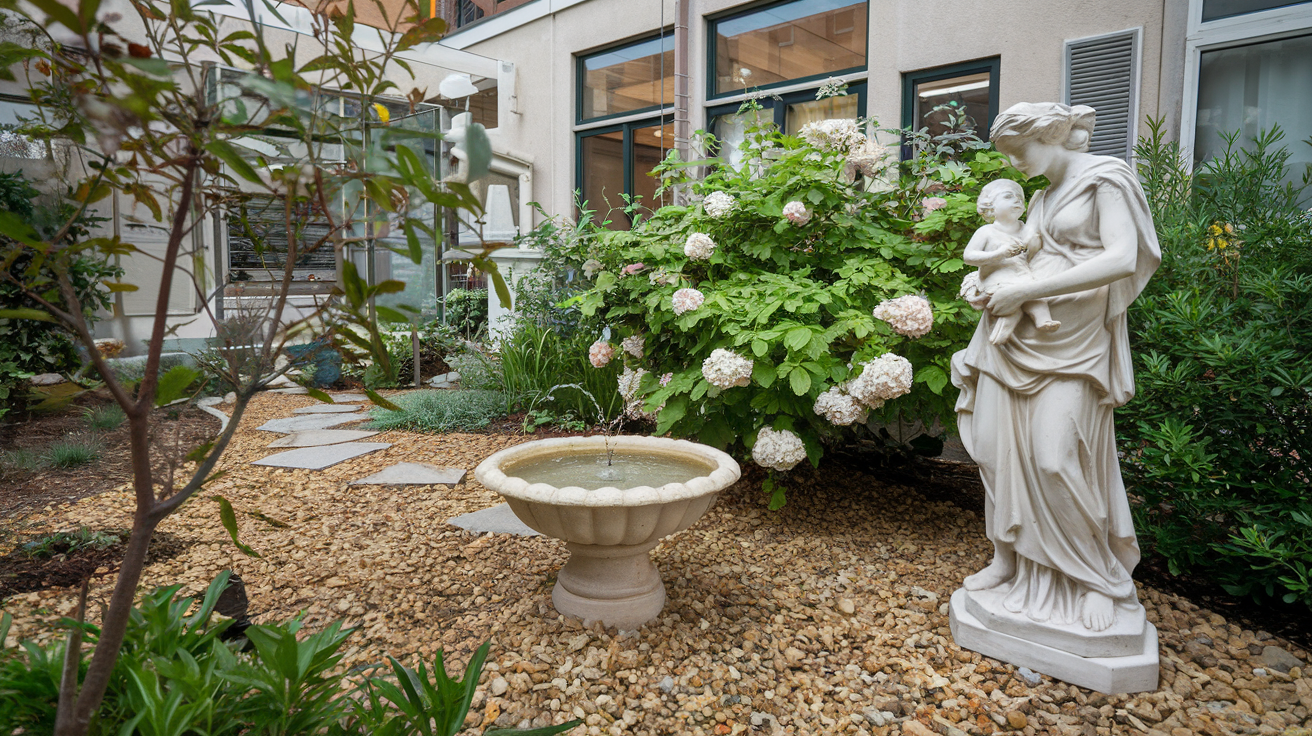Transform your outdoor space into a charming Italian oasis with these simple steps.
Introduction
Italian gardens are renowned for their timeless elegance, symmetry, and harmonious blend of nature and art. They evoke images of sun-soaked terraces, fragrant citrus trees, and the gentle sound of water trickling from ornate fountains. The good news is that you don’t need to own a villa in Tuscany to enjoy this serene ambiance. With thoughtful planning and a few strategic choices, you can recreate the charm of an Italian garden right in your backyard. This guide will walk you through the essential elements and steps to bring a touch of Italy to your outdoor space.
Key Elements of an Italian Garden
Before diving into the transformation, it’s important to understand the fundamental features that define an Italian garden. These elements work together to create a cohesive and authentic aesthetic.
Symmetry and Structure
Italian gardens are celebrated for their formal design and balanced layouts. Paths, hedges, and planting beds are often arranged in geometric patterns that create a sense of order and harmony.
- Balanced Layouts: Use symmetry in your garden design to create visual appeal.
- Defined Spaces: Separate areas for different functions, such as dining, relaxing, or showcasing plants.
Focal Points
Central features like statues, fountains, or sculptures serve as eye-catching focal points that draw attention and add artistic flair.
- Statues and Sculptures: Classical figures or modern pieces that reflect personal taste.
- Fountains: The sound of water adds tranquility and enhances the sensory experience.
Terracotta Pots
Terracotta is synonymous with Mediterranean style and is widely used in Italian gardens for planters and decorative elements.
- Planters: Use terracotta pots for herbs, citrus trees, and flowering plants.
- Decorative Accents: Incorporate terracotta tiles or ornaments to reinforce the theme.
Plant Selection
Choosing the right plants is crucial for capturing the essence of an Italian garden.
- Cypress Trees: Tall and slender, they add vertical interest and a sense of grandeur.
- Lavender and Rosemary: Fragrant herbs that thrive in Mediterranean climates.
- Climbing Roses: Add romance and color to walls and trellises.
Step-by-Step Guide to Recreate an Italian Garden
Transforming your backyard into an Italian retreat involves careful planning and execution. Follow these steps to achieve an authentic look.
Step 1: Design Your Layout
Begin by sketching a plan of your backyard, considering the existing features and how you can incorporate Italian design principles.
- Focus on Symmetry: Arrange pathways, hedges, and planting beds in balanced, geometric patterns.
- Create Pathways: Design paths that guide visitors through the garden, using materials like gravel or brick.
- Establish Focal Points: Decide where to place a fountain, statue, or seating area as the centerpiece.
Step 2: Select the Right Plants
Plants are the heart of any garden. Opt for species that reflect the Mediterranean climate and Italian aesthetics.
- Trees: Plant cypress or olive trees to provide structure and a touch of authenticity.
- Flowers: Incorporate lavender, Italian jasmine, and climbing roses for color and fragrance.
- Herbs: Grow basil, rosemary, thyme, and oregano in terracotta pots or dedicated herb beds.
Step 3: Add Hardscape Features
Hardscape elements like pathways, walls, and seating areas add functionality and style.
- Stone Pathways: Use natural stone, gravel, or brick to create rustic paths.
- Terracotta Pots: Place them strategically around the garden filled with vibrant plants.
- Seating Areas: Include wooden benches or wrought iron furniture to provide relaxing spots.
Step 4: Incorporate Water Features
Water elements are essential in Italian gardens, offering both visual appeal and soothing sounds.
- Fountains: Install a small fountain as a focal point; options range from wall-mounted to freestanding designs.
- Reflecting Pools: If space allows, consider adding a shallow pool to reflect the surrounding beauty.
Choosing the Right Materials
The materials you select will significantly influence the garden’s overall feel and authenticity.
Stone and Terracotta
- Planters and Pots: Terracotta is ideal for its earthy tones and rustic charm.
- Walls and Pathways: Use natural stone to build retaining walls or pave walkways.
Wrought Iron Furniture
- Seating: Classic wrought iron benches or chairs add elegance.
- Accents: Consider wrought iron trellises or gates to enhance the aesthetic.
Gravel or Brick Pathways
- Ease of Maintenance: Gravel and brick are durable and require minimal upkeep.
- Aesthetic Appeal: They contribute to the rustic, old-world charm of Italian gardens.
Maintaining Your Italian Garden
An Italian garden requires regular care to preserve its structured beauty and vibrant plant life.
Regular Pruning
- Shape Plants: Keep hedges, topiaries, and trees neatly trimmed to maintain symmetry.
- Remove Dead Growth: Regularly eliminate dead or diseased branches to promote healthy growth.
Proper Irrigation
- Well-Drained Soil: Mediterranean plants prefer soils that don’t retain excess moisture.
- Watering Schedule: Water deeply but infrequently to encourage strong root development.
Seasonal Planting
- Year-Round Interest: Plant a mix of evergreen and seasonal plants to ensure the garden looks appealing throughout the year.
- Rotate Annuals: Refresh flowering plants each season to maintain vibrant colors.
Incorporating Italian Garden Design on a Budget
Creating an Italian garden doesn’t have to be expensive. Here are some tips to achieve the look without overspending.
Use Local Plants
- Adaptable Species: Choose plants that thrive in your climate but resemble Mediterranean varieties.
- Native Alternatives: Substitute expensive imports with local plants that offer similar aesthetics.
DIY Features
- Homemade Fountains: Build a simple fountain using affordable materials and a basic water pump.
- Gravel Paths: Lay your own gravel pathways to save on labor costs.
Repurpose Materials
- Secondhand Finds: Look for used terracotta pots, statues, or furniture at flea markets or online marketplaces.
- Natural Elements: Use stones or rocks from your property for edging or accents.
Final Touches
The little details can make a big difference in bringing your Italian garden to life.
Add Lighting
- String Lights: Draping lights across trees or pergolas adds a magical touch in the evenings.
- Lanterns: Place lanterns along pathways or around seating areas for ambiance.
Outdoor Dining Spaces
- Al Fresco Dining: Set up a dining table to enjoy meals outdoors, embracing the Italian tradition of gathering with family and friends.
- Decorative Accents: Use tablecloths, cushions, and dishware that complement the garden’s theme.
Conclusion
Recreating an Italian garden in your backyard is a rewarding project that combines design, horticulture, and a bit of artistry. By focusing on symmetry, selecting appropriate plants, and incorporating key features like water elements and terracotta accents, you can transform your outdoor space into a tranquil Mediterranean retreat. Whether you’re working with a generous budget or looking for cost-effective solutions, the essence of Italian garden design is achievable and customizable to your preferences. So grab your sketchpad, start planning, and soon you’ll be enjoying la dolce vita right at home.
Ready to embark on your Italian garden journey? With these tips and a touch of creativity, your backyard will soon echo the timeless beauty of Italy’s most enchanting gardens.




Pingback: Can You Grow Plants on Top of Ashes? The Truth About Cremation Ashes in Gardening - CropTap